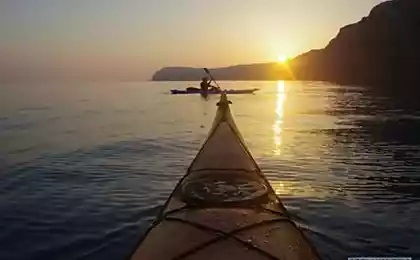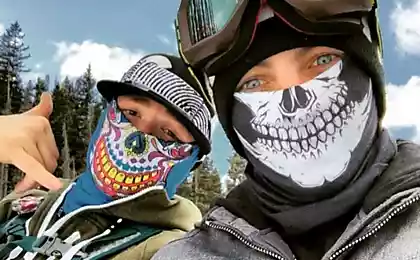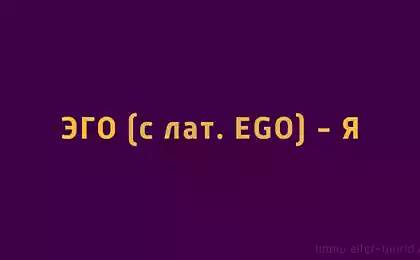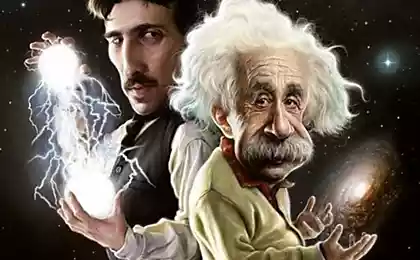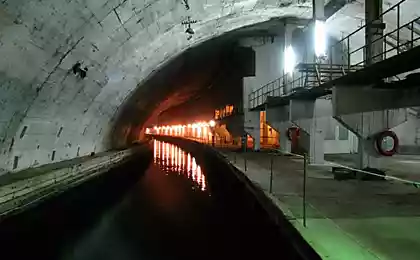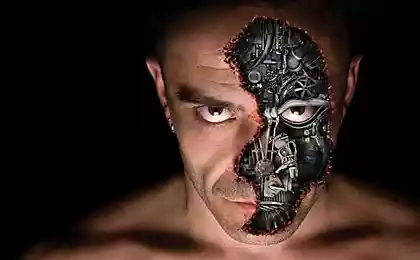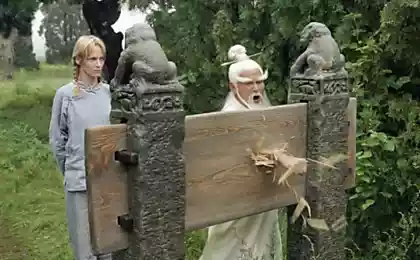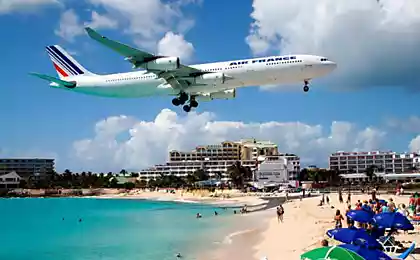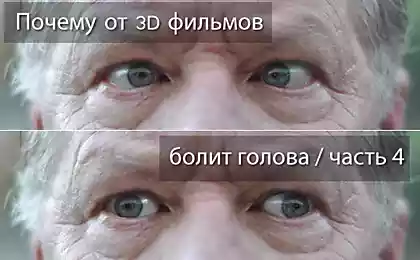762
Objects in the vicinity of Balaklava
50 photos of the author
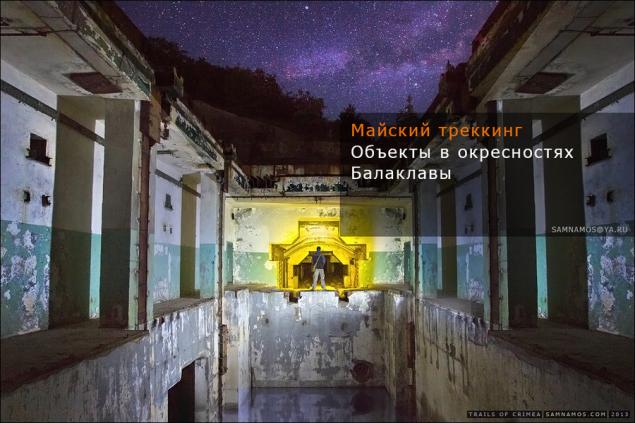
In the vicinity of Balaklava there are several interesting places about which will be discussed in this review: the huge quarry fluxing limestone of the mountain Tavros, abandoned coastal battery at Cape Kuron, forts "North" and "South" Balaklava on the opposite bank, and disbanded missile Complex "The Rock" with an extensive system of underground galleries.
We begin with a tour of chetyrehorudiynoy battery №19, located on the rocky coast between Cape Kuron and Mount Mytilino.
Its construction began in 1913 and completed in 1924. The battery is designed to defend the coast from the cruisers and destroyers. As the weapons used four 152 mm guns Kane (as the cruiser "Aurora"). Such weapons could hit the enemy cruisers and battleships at a distance of 20 kilometers. The battery had a circular firing, having a rate of up to 10 rounds per minute. However, from the land guns were not protected and were as vulnerable as field artillery guns. In the autumn of 1941 all four guns were turned toward the coast and 6 months almost continuously worked on coming to Sevastopol Wehrmacht.
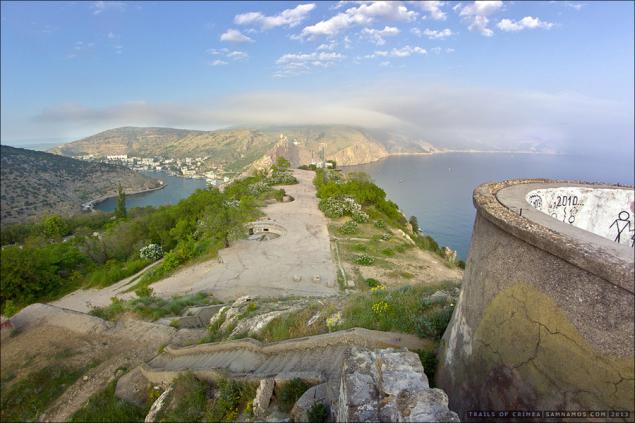
Towers guns were mounted on a concrete base and had a reinforced concrete cellar for ammunition and a concrete parapet, covering the staff of the guns from enemy fire from the sea.

It's hard to resist a little picnic in a scenic location.
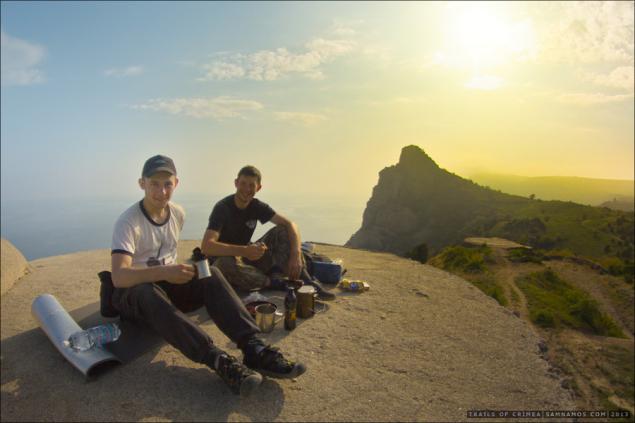
After the war the battery was rearmed 130-mm guns B-13, in 1993, closed down and liquidated in 2002 and, as usual, spoiled.
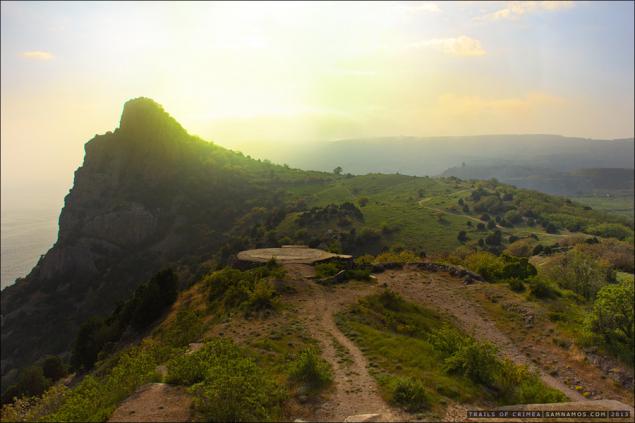
The turret behind catches the eye graffiti cute love story.
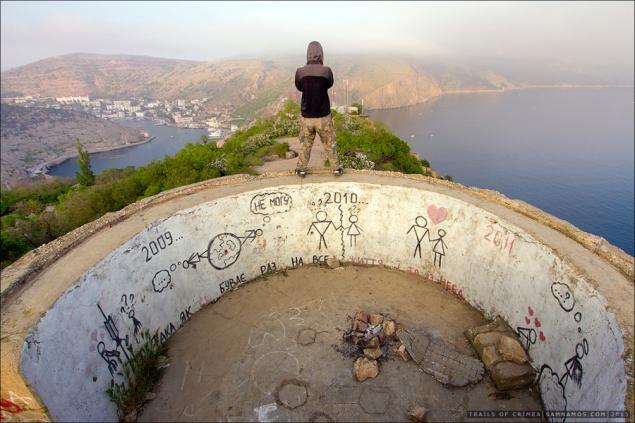
Now go down to the depths of the battery. Underground galleries consist of a command center, storage space weapons, boiler, compressor and power stations, the reticle and a number of outbuildings.

Almost all of the iron dismantled.
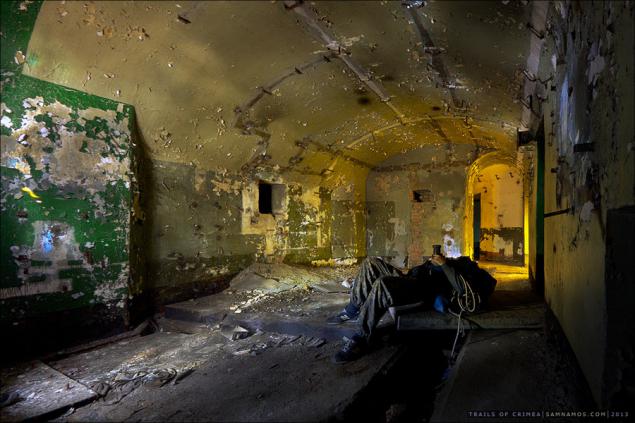
Battery storey underground, but it is located on three levels, which are connected ladder transitions.
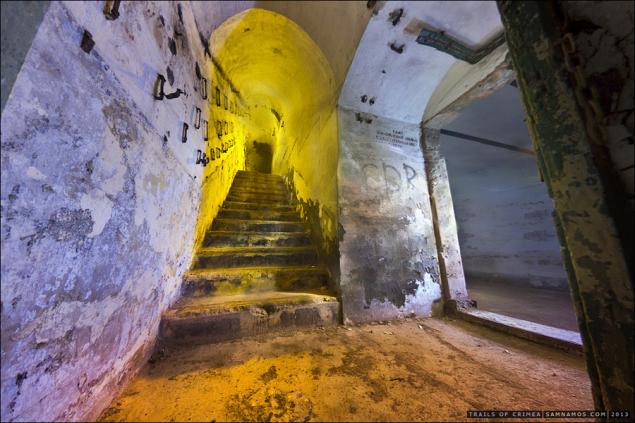
The underground part of the basis of the dominant battery - corridor, which runs from the room.
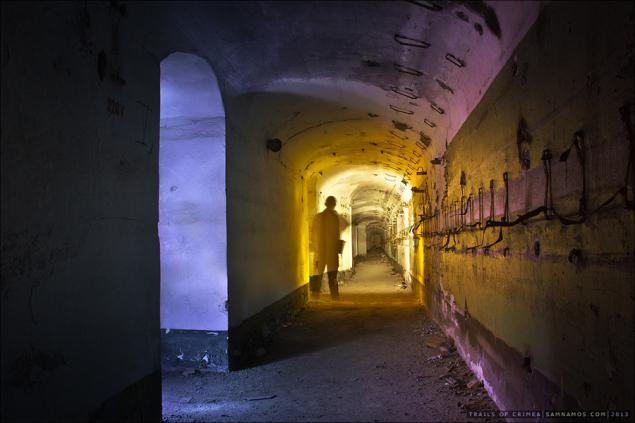
Access to one of the gun turrets.
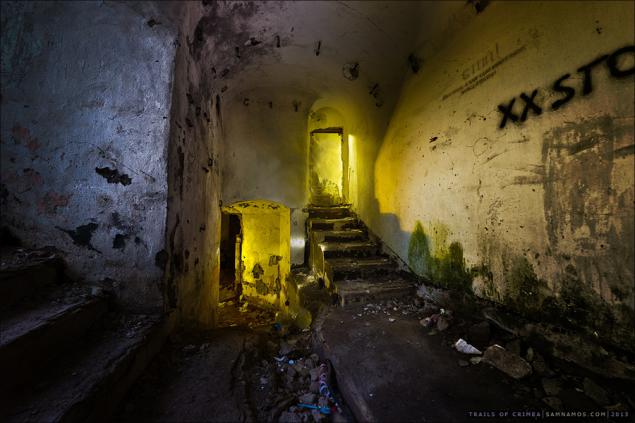
On some walls survived stencil lettering warnings and reminders. For example, the one that in the photo: "Hand over the firearms and incendiary accessories».
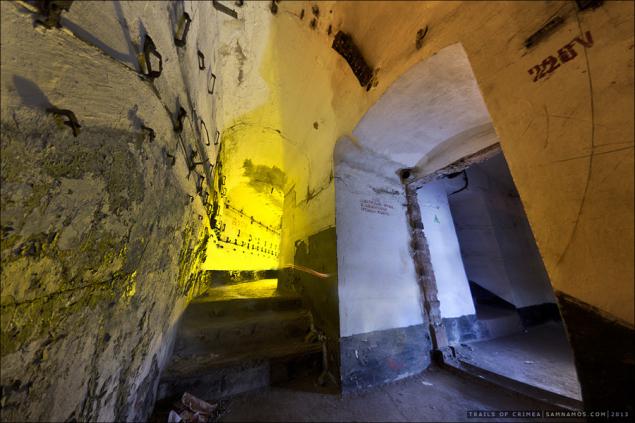
Driving battery.
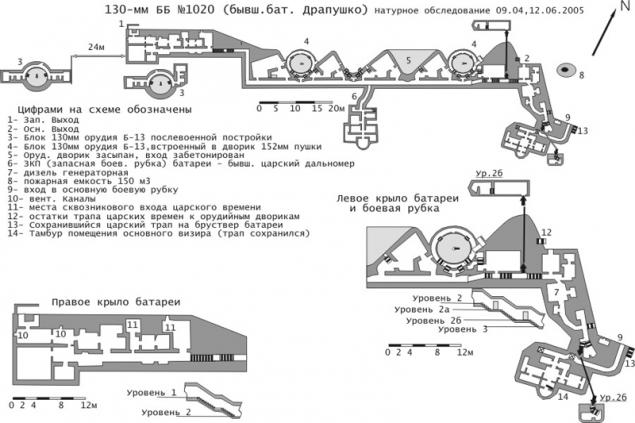
The cross-section tools.
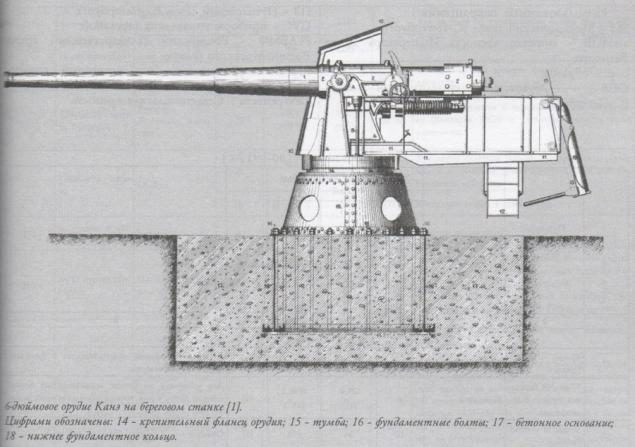
Not far from the battery is huge Psileharsky quarry fluxing limestone. Here, by the way, we decided to spend the night. Fullsayz panorama link
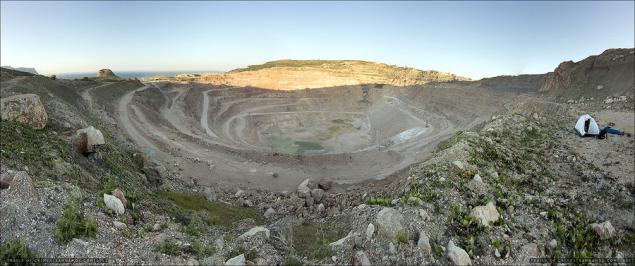
From a distance, the huge mining machinery would seem a toy.

Close this truck looks like.
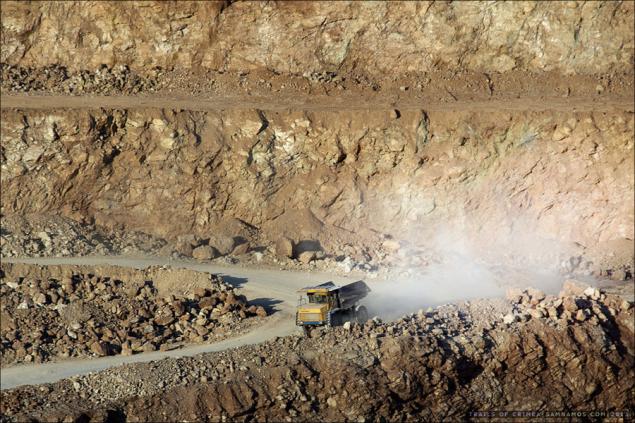
Garages for machinery and CPR.
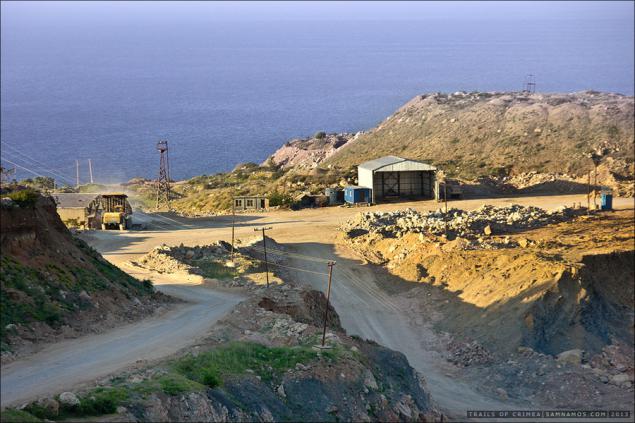
Walk on the career completed familiarity with security.

We were quick to take out of the territory, thus get rid of the long and tedious descent down :)
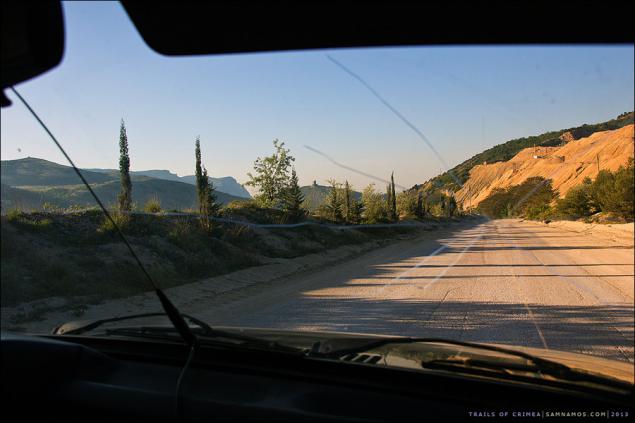
The next place we visited, is an abandoned Coast stationary missile complex "Cliff", located on the opposite shore, about 3 km from Balaklava.
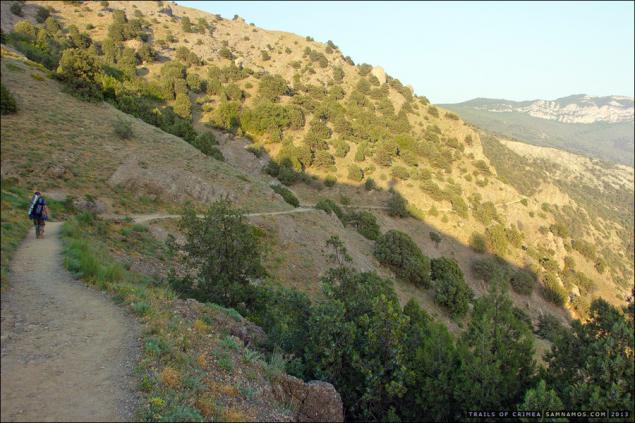
The road to it passes through very picturesque hillside.
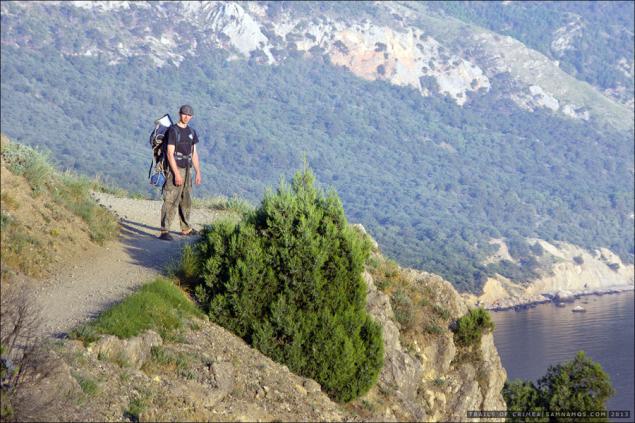
Bright sunset behind.
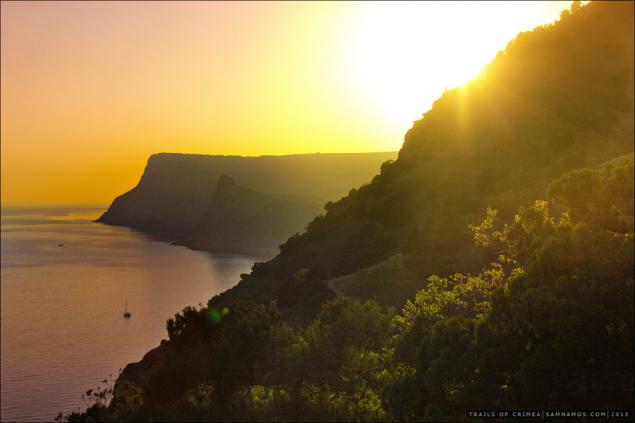
Reference. To protect the southern maritime borders and Sevastopol from the sea in the midst of the Cold War in 1954, high in the mountains near Balaklava began to form the world's first underground missile complex land-based "Sopka" with a radius of action in the Black Sea up to 100 km. Front door / entrance to the underground portion.
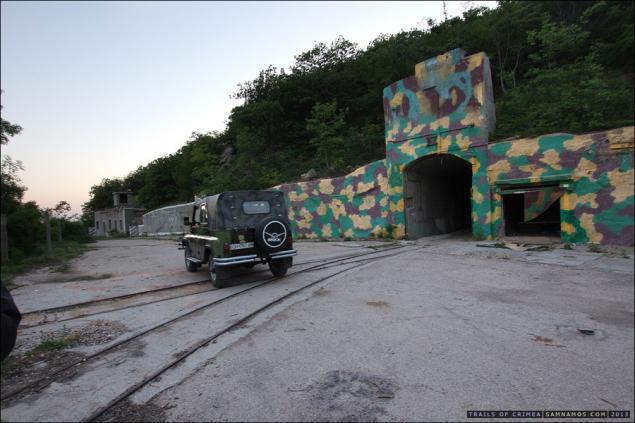
"Object 100" - that such a code had a secret building. At 6 km distance from each other, it was built two types of underground complex from launch pad. Designated building were specifically chosen to verdant slopes for better camouflage.
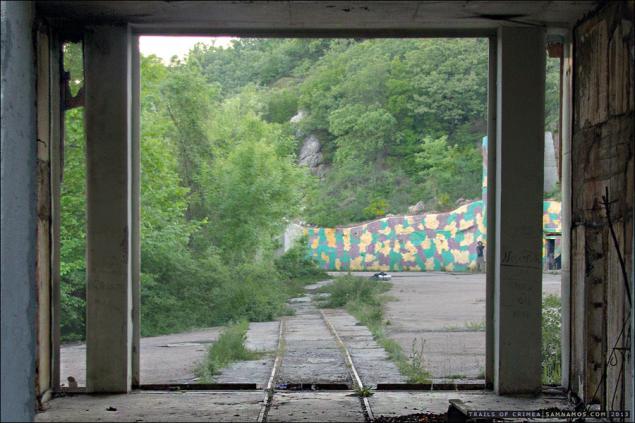
Previously, there was a missile launcher. Submission of ammunition was carried out through tunnel.

Ventilation shafts.
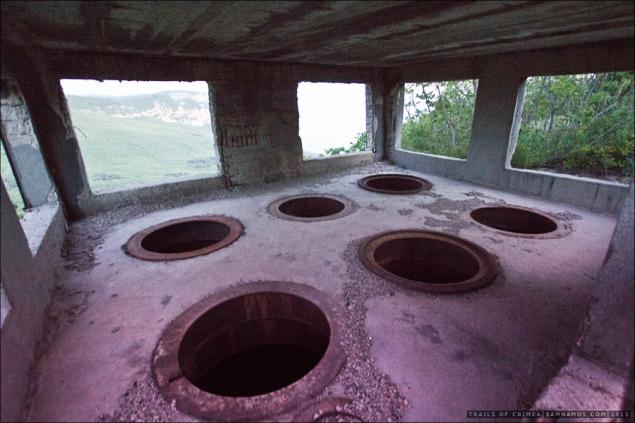
Look inside.

All underground facilities were built with high strength and can withstand the impact of nuclear weapons. Underground housed the command post, missile storage and workshop for training and refueling. Rockets in the buildings were on special technological carts with folded wings and moved to the starting position by special mechanisms. The complex has a full engineering, diesel power plants, for filtering, supplies of fuel, food and water, ensuring the vital activity of the object at its full sealing after the atomic attack.
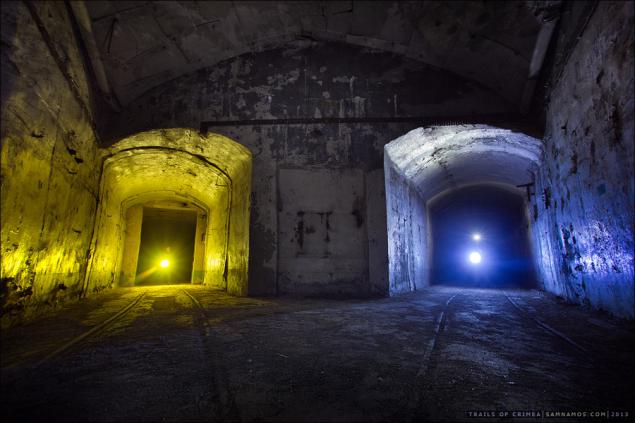
Entrance to the object overlap two massive shock-proof doors.
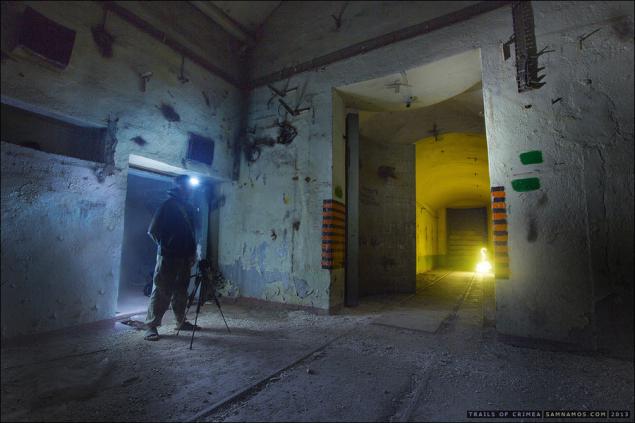
The niche in the main tunnel, which houses the system loading torpedoes on trolleys.
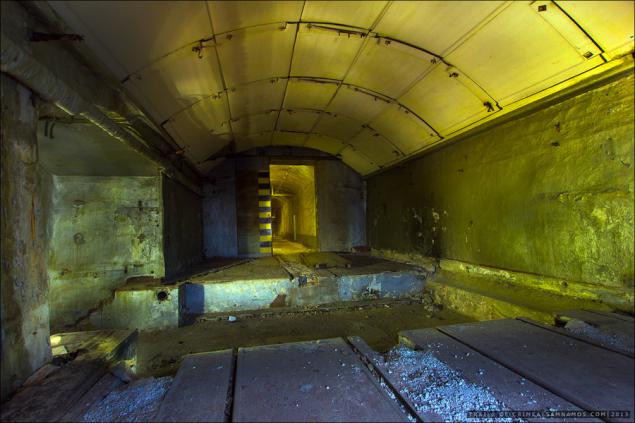
At the end of 1956, the construction of "Object 100" was completed. In 1957 he formed a separate coastal missile regiment, which was included in the core fleet of combat forces.
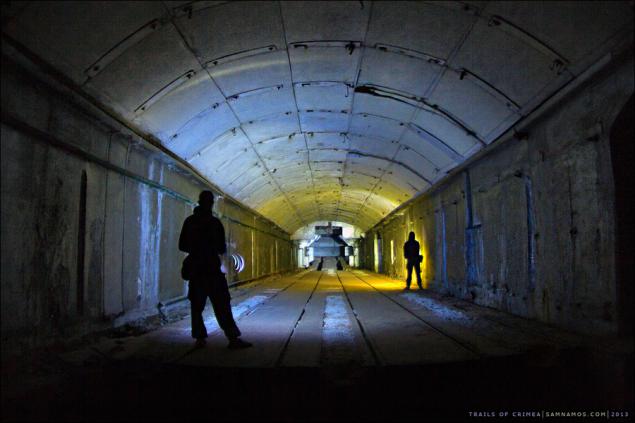
Access to the pad. The thickness of the walls more than a meter.
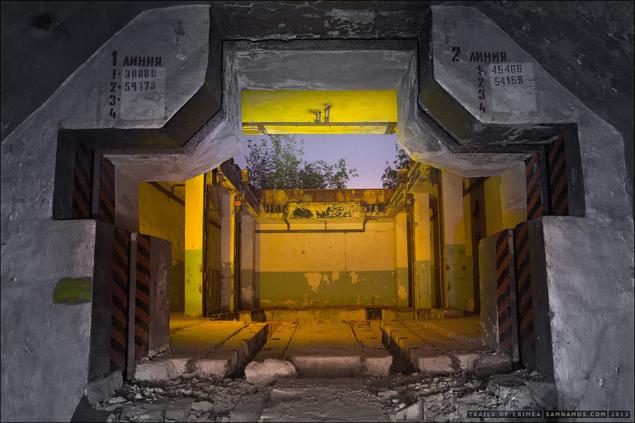
Starry sky with this angle looks very unusual.
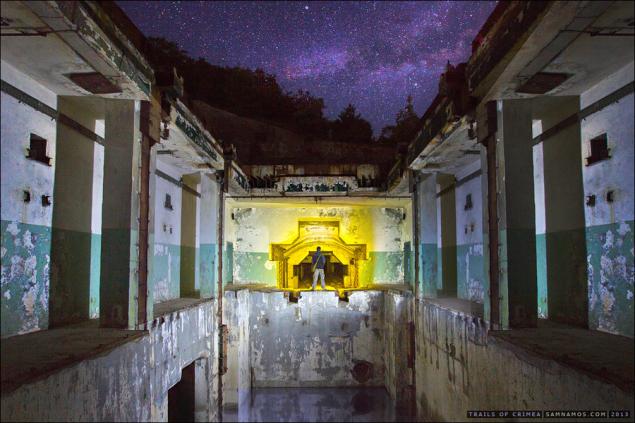
In addition to the two main tunnels, which transports torpedoes, the object has a system of human salable with outlets in many areas and mines.
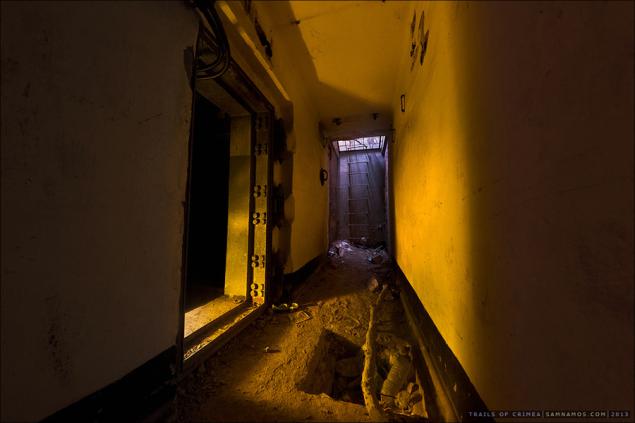
Boiler room. At the end of the hall remains of the stove.
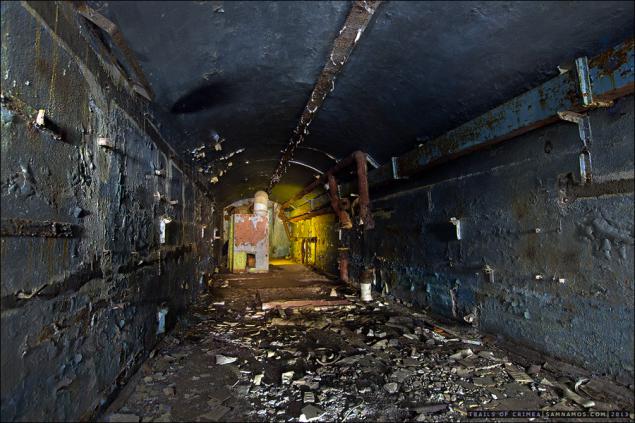
The first "Weaving" in 1997, the division of the Black Sea Fleet, was handed over to Naval Forces of Ukraine, and in 2002 disbanded.

The second is currently mothballed and somehow protected.
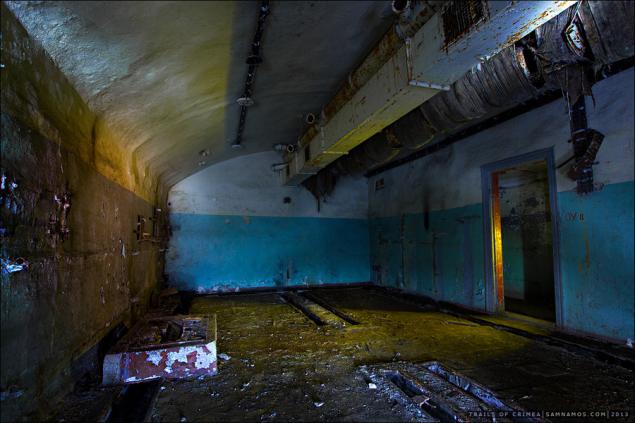
After the war in Georgia decided to fully enter the second object in the system and carry out live firing by 2012, but still remained on paper. It is possible that the battery will never function.
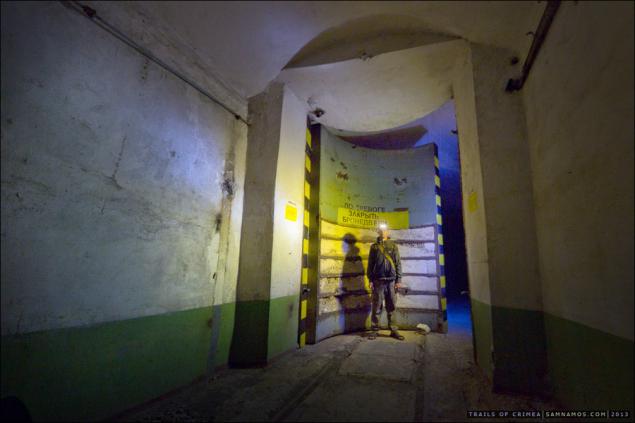
Typical "Sotok».
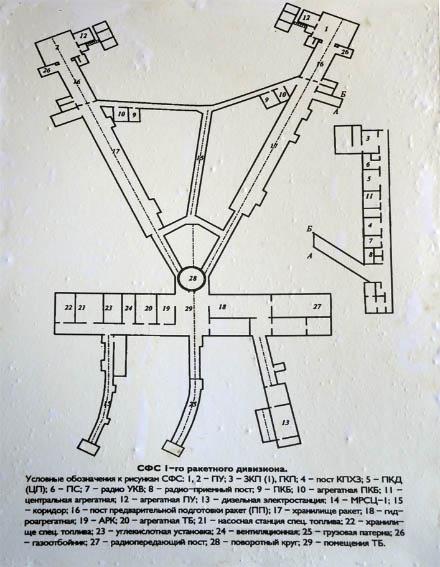
This Asketi mountain peak (362 meters). There is a fort "South Balaclava" on the background can be seen the ruins of Genoese.
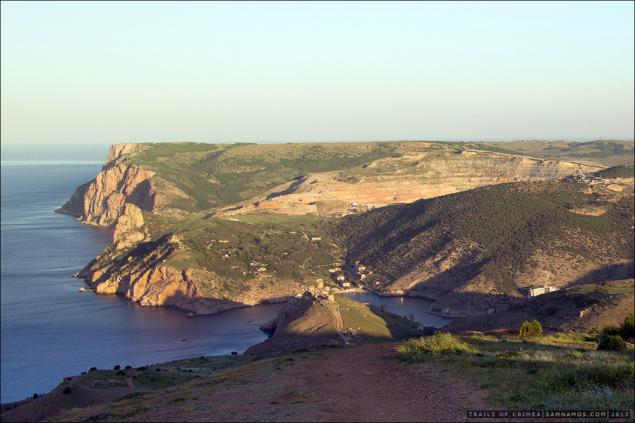
"The place of power»
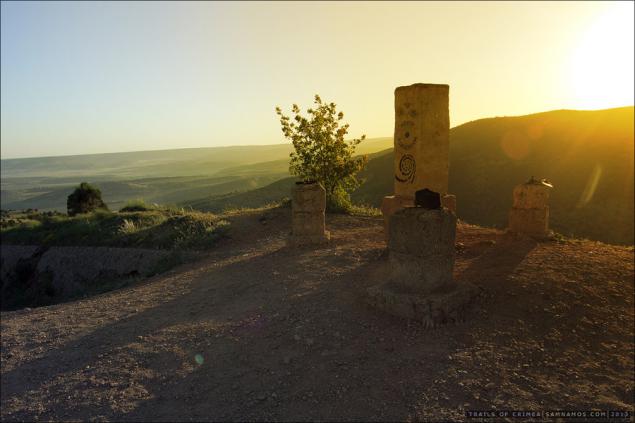
Lastly, the fort "North balaclava." Located at an altitude of 212 meters on the slopes of Mount mullet Vries. Both the fort is a network of deep ditches and not very interesting for inspection, but there is a reason to rise to the second.
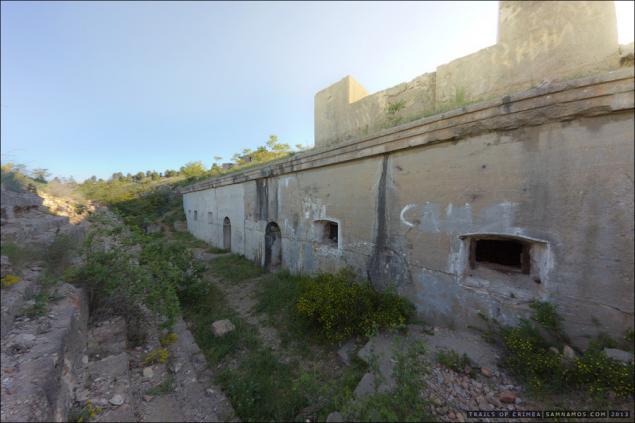
It is 124 meters long tunnel, which passes through the fort. Its width is 2, 6 meters, height 3, 5 meters, and the thickness of the concrete cover of about one meter. Adit was equipped with 240 beds, every 7-10 meters were ventilation holes in the walls, and every 25-30 meters of the mine with the stairs that led to the surface. (Now everything except the gallery, filled up).
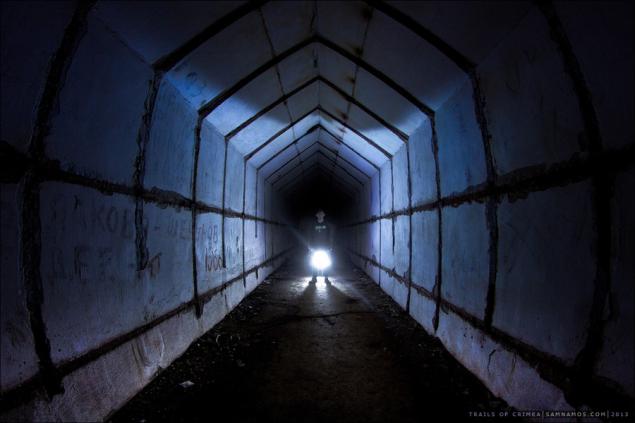
From the west tunnel adjacent to the command. The outer wall thickness of 1, 5 m and a ceiling of 2, 2 m. The facility planned to install 75-mm gun, but the gun has not been installed - prevented the October revolution. The construction of coastal fortifications of the 12th section of Balaklava group (which included the fort "Balaklava South") was resumed only in 1925. Then the fortress was completed road, air reservoirs, routed network engineering. Finally, the construction of permanent fortifications Balaklava group has not been completed.
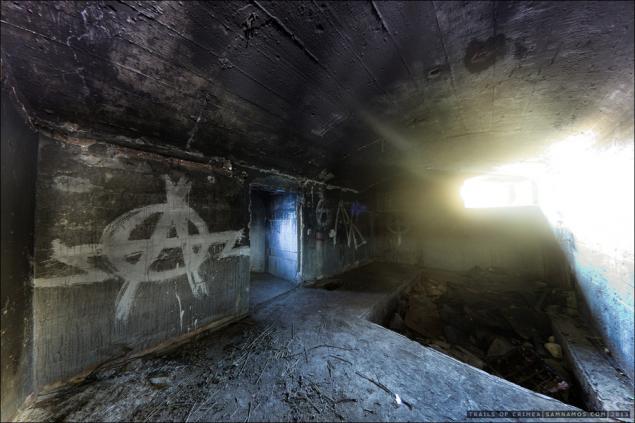
During World War II, the fort was captured by the Nazis, and the tunnel was used as an underground hospital.
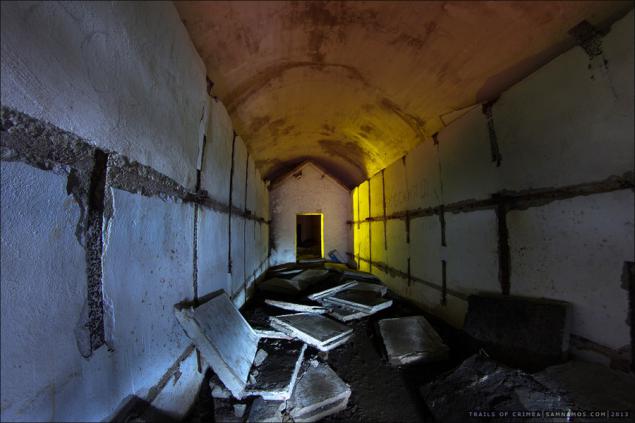
Driving.
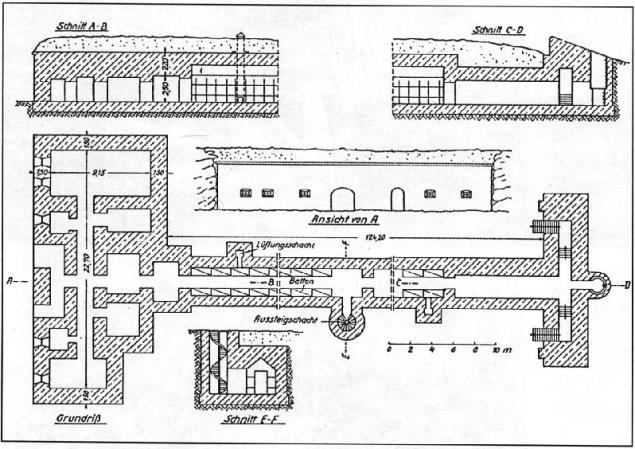
After the war the underground facilities were used as a testing ground for bombs, and later as a warehouse for the storage of ammunition and then abandoned.
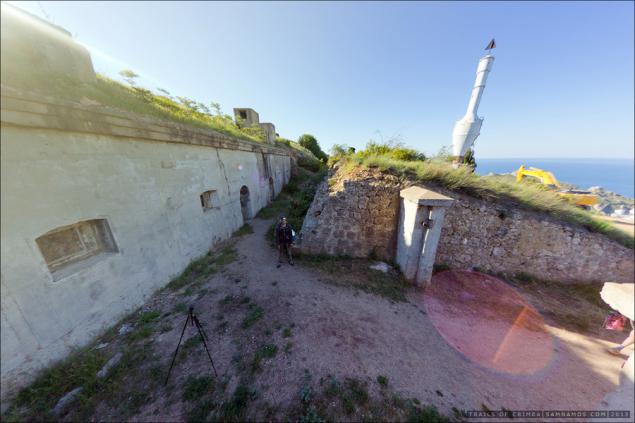
Now, close to the ruins of the fort, is building luxury villas.

This bid farewell to go to Balaclava and Sevastopol.
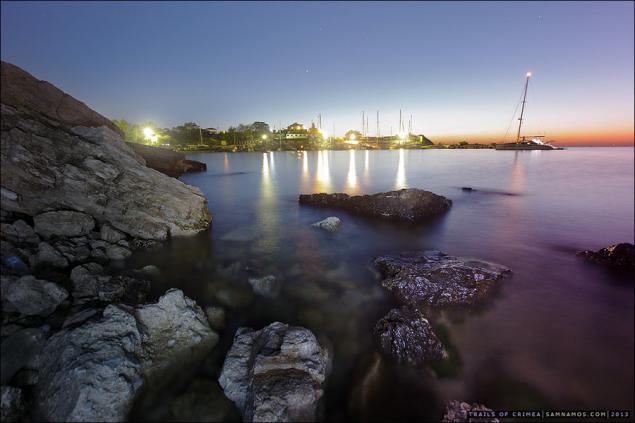
Source:

In the vicinity of Balaklava there are several interesting places about which will be discussed in this review: the huge quarry fluxing limestone of the mountain Tavros, abandoned coastal battery at Cape Kuron, forts "North" and "South" Balaklava on the opposite bank, and disbanded missile Complex "The Rock" with an extensive system of underground galleries.
We begin with a tour of chetyrehorudiynoy battery №19, located on the rocky coast between Cape Kuron and Mount Mytilino.
Its construction began in 1913 and completed in 1924. The battery is designed to defend the coast from the cruisers and destroyers. As the weapons used four 152 mm guns Kane (as the cruiser "Aurora"). Such weapons could hit the enemy cruisers and battleships at a distance of 20 kilometers. The battery had a circular firing, having a rate of up to 10 rounds per minute. However, from the land guns were not protected and were as vulnerable as field artillery guns. In the autumn of 1941 all four guns were turned toward the coast and 6 months almost continuously worked on coming to Sevastopol Wehrmacht.

Towers guns were mounted on a concrete base and had a reinforced concrete cellar for ammunition and a concrete parapet, covering the staff of the guns from enemy fire from the sea.

It's hard to resist a little picnic in a scenic location.

After the war the battery was rearmed 130-mm guns B-13, in 1993, closed down and liquidated in 2002 and, as usual, spoiled.

The turret behind catches the eye graffiti cute love story.

Now go down to the depths of the battery. Underground galleries consist of a command center, storage space weapons, boiler, compressor and power stations, the reticle and a number of outbuildings.

Almost all of the iron dismantled.

Battery storey underground, but it is located on three levels, which are connected ladder transitions.

The underground part of the basis of the dominant battery - corridor, which runs from the room.

Access to one of the gun turrets.

On some walls survived stencil lettering warnings and reminders. For example, the one that in the photo: "Hand over the firearms and incendiary accessories».

Driving battery.

The cross-section tools.

Not far from the battery is huge Psileharsky quarry fluxing limestone. Here, by the way, we decided to spend the night. Fullsayz panorama link

From a distance, the huge mining machinery would seem a toy.

Close this truck looks like.

Garages for machinery and CPR.

Walk on the career completed familiarity with security.

We were quick to take out of the territory, thus get rid of the long and tedious descent down :)

The next place we visited, is an abandoned Coast stationary missile complex "Cliff", located on the opposite shore, about 3 km from Balaklava.

The road to it passes through very picturesque hillside.

Bright sunset behind.

Reference. To protect the southern maritime borders and Sevastopol from the sea in the midst of the Cold War in 1954, high in the mountains near Balaklava began to form the world's first underground missile complex land-based "Sopka" with a radius of action in the Black Sea up to 100 km. Front door / entrance to the underground portion.

"Object 100" - that such a code had a secret building. At 6 km distance from each other, it was built two types of underground complex from launch pad. Designated building were specifically chosen to verdant slopes for better camouflage.

Previously, there was a missile launcher. Submission of ammunition was carried out through tunnel.

Ventilation shafts.

Look inside.

All underground facilities were built with high strength and can withstand the impact of nuclear weapons. Underground housed the command post, missile storage and workshop for training and refueling. Rockets in the buildings were on special technological carts with folded wings and moved to the starting position by special mechanisms. The complex has a full engineering, diesel power plants, for filtering, supplies of fuel, food and water, ensuring the vital activity of the object at its full sealing after the atomic attack.

Entrance to the object overlap two massive shock-proof doors.

The niche in the main tunnel, which houses the system loading torpedoes on trolleys.

At the end of 1956, the construction of "Object 100" was completed. In 1957 he formed a separate coastal missile regiment, which was included in the core fleet of combat forces.

Access to the pad. The thickness of the walls more than a meter.

Starry sky with this angle looks very unusual.

In addition to the two main tunnels, which transports torpedoes, the object has a system of human salable with outlets in many areas and mines.

Boiler room. At the end of the hall remains of the stove.

The first "Weaving" in 1997, the division of the Black Sea Fleet, was handed over to Naval Forces of Ukraine, and in 2002 disbanded.

The second is currently mothballed and somehow protected.

After the war in Georgia decided to fully enter the second object in the system and carry out live firing by 2012, but still remained on paper. It is possible that the battery will never function.

Typical "Sotok».

This Asketi mountain peak (362 meters). There is a fort "South Balaclava" on the background can be seen the ruins of Genoese.

"The place of power»

Lastly, the fort "North balaclava." Located at an altitude of 212 meters on the slopes of Mount mullet Vries. Both the fort is a network of deep ditches and not very interesting for inspection, but there is a reason to rise to the second.

It is 124 meters long tunnel, which passes through the fort. Its width is 2, 6 meters, height 3, 5 meters, and the thickness of the concrete cover of about one meter. Adit was equipped with 240 beds, every 7-10 meters were ventilation holes in the walls, and every 25-30 meters of the mine with the stairs that led to the surface. (Now everything except the gallery, filled up).

From the west tunnel adjacent to the command. The outer wall thickness of 1, 5 m and a ceiling of 2, 2 m. The facility planned to install 75-mm gun, but the gun has not been installed - prevented the October revolution. The construction of coastal fortifications of the 12th section of Balaklava group (which included the fort "Balaklava South") was resumed only in 1925. Then the fortress was completed road, air reservoirs, routed network engineering. Finally, the construction of permanent fortifications Balaklava group has not been completed.

During World War II, the fort was captured by the Nazis, and the tunnel was used as an underground hospital.

Driving.

After the war the underground facilities were used as a testing ground for bombs, and later as a warehouse for the storage of ammunition and then abandoned.

Now, close to the ruins of the fort, is building luxury villas.

This bid farewell to go to Balaclava and Sevastopol.

Source:

